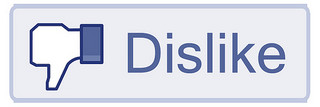 Facebook Pages has proven to be a very useful tool for brands since its introduction. Whether you’re an online retailer, a fan club, a media property, or any other non-human entity, a Facebook page has become an essential outpost on the Internet for you.
Facebook Pages has proven to be a very useful tool for brands since its introduction. Whether you’re an online retailer, a fan club, a media property, or any other non-human entity, a Facebook page has become an essential outpost on the Internet for you.
Of course, Facebook pages are free to set up, just like the profiles for individuals. With a simple investment of time, a brand could be up and running, and interacting with its fan or customer base in no time.
Unfortunately, after the multiple changes to the Facebook API, the engagement levels of pages seemed to wane more and more, until reaching 16%. Business Insider took note of this, observing that Facebook seems ready to finally make some money from its business users.
Nicholas Carlson reports:
When a Facebook page owner posts a piece of content to their page, and that content gets dispersed into the News Feeds of that page’s fans, only 16% of those fans will actually see that piece of content. Facebook’s new ad product, called Reach Generator, is supposed to take that number, 16%, and push it toward 100%. Test campaigns pushed it past 95% in some cases. Basically, when a brand buys into a Reach Generator campaign, Facebook will push posts from that brands page into its fans’ News Feeds, mobile News Feeds, and log-out screen until almost all of that brand’s fans see it.
So, there is not a large amount of real reach with a Facebook page, but now you can pay for it (to an extent). Even with using Facebook-based advertising, there is a lower-than-expected ceiling on how visible you can be.
Then came the Timeline, and many people saw their metrics plunge. After awhile, a picture began to emerge: Facebook posts made using third-party apps are now getting much less visibility than those made from within the Facebook interface.
For anyone who manages multiple Facebook pages, a publisher with one for each book perhaps, this is a nightmare. If you use HootSuite or any other dashboard program that allows you to post without going directly to Facebook, you will see your “Likes” drop by a whopping 67%. (Pre-Timeline, this was not the case.)
HubSpot was all over this, rapidly analyzing why its engagement has capsized after adopting Timeline. HubSpot’s results are another instance where Facebook makes me want to bang my head on the desk:
- Content published through third-party API tools suffered 67% fewer likes than content published manually via Facebook.com.
- Content published through third-party API tools suffered 60% fewer clicks than content published manually via Facebook.com.
Jeff Korhan states it succinctly, and I agree with him that it’s the best reason to dive into Google+:
… [T]he only way to reach most of your Facebook page fans is to invest in Facebook ads.
Surprisingly, regardless of your spending, your potential reach is limited to about 75% — according to Facebook.
This is precisely why the in-the-know crowd has gravitated towards Google+.
Google also uses algorithms to determine the content that is most relevant for those performing a search. The difference is it’s a fair fight, so to speak. Unlike Facebook, Google does not block any of your content. Rather, they use their algorithms to determine what gets sent to whom.
That’s the thing about social media: You have to be nimble. It’s a constant program of self-education because even the platforms you’re used to shift and change with regularity.
Image by Sean MacEntee, used under its Creative Commons license.